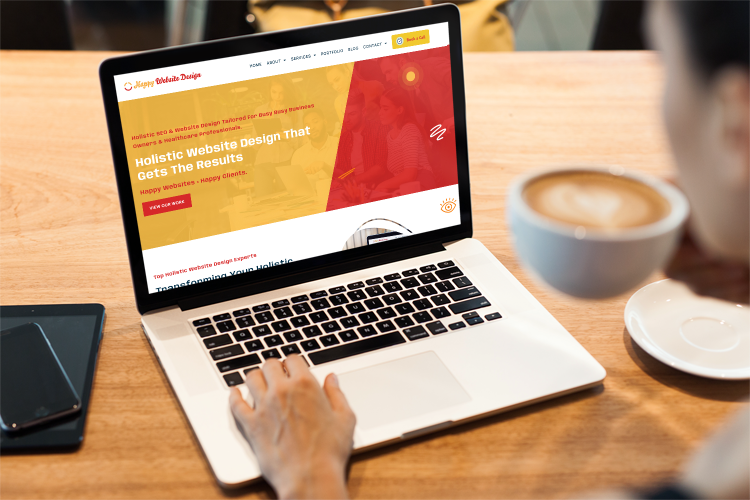Create a Well Balanced Online Experience With Alternative Web Layout
In today's electronic landscape, creating a balanced online experience with all natural internet layout is essential for satisfying the varied requirements of customers. By focusing on accessibility and aligning content technique with individual preferences, organizations can significantly boost engagement.
Understanding Alternative Website Design
This technique thinks about not only visual aspects yet additionally capability, usability, and the psychological effect of the website on its individuals. By seeing a website as an interconnected ecological community, designers can make certain that every part-- visual layout, material, navigating, and interactivity-- works harmoniously to accomplish user requirements.

Integrating an alternative point of view involves comprehending the target market and their specific requirements, choices, and actions. It needs an evaluation of how customers connect with different elements of the website and exactly how these communications influence their total experience. This approach also takes into consideration the broader context in which the web site runs, including brand identity, advertising and marketing methods, and competitive landscape.
Ultimately, an alternative strategy to internet layout leads to a more interesting and effective online presence. By focusing on the user trip and cultivating a seamless experience across all touchpoints, designers can create internet sites that not only catch attention yet also encourage sustained interaction and fulfillment. This extensive technique advertises lasting success and cultivates brand name loyalty.
Trick Concepts of User Experience

One vital concept is usability, which emphasizes the relevance of uncomplicated navigation and clear capability. Websites ought to be simple to browse, allowing individuals to situate information swiftly. This is closely tied to consistency, where layout elements, such as buttons and menus, ought to remain consistent throughout the website to improve experience and simplicity of use.
Another considerable principle is comments, ensuring that users are notified about their communications. Whether through visual signs or notifications, feedback enhances a feeling of control and contentment. In addition, the principle of pecking order determines that details ought to be organized logically, directing individuals through content properly.
Finally, psychological design plays a vital function in UX. By stimulating favorable feelings via appearances and communications, designers can produce remarkable experiences that cultivate individual commitment - website development consulting. By sticking to these principles, internet developers can develop all natural experiences that resonate with customers and meet their goals
Value of Accessibility
Accessibility is a critical element of website design that guarantees all customers, no matter their capabilities or disabilities, can connect with digital web content efficiently. By prioritizing ease of access, internet designers produce comprehensive environments that provide to diverse individual requirements, improving overall customer experience.
An easily accessible web site abides by developed guidelines, such as the Internet Material Access Standards (WCAG), which recommend practices like offering message alternatives for non-text material, making certain adequate shade comparison, and allowing key-board navigating. These methods not only offer individuals with impairments, such as aesthetic or auditory impairments, yet additionally benefit various other user teams, including those with situational limitations or older adults.
In addition, the importance of ease of access expands past honest considerations; it additionally impacts service results. An inclusive internet site can reach a more comprehensive target market, eventually bring about increased interaction and conversions. In addition, availability compliance decreases the risk of legal repercussions connected to discrimination.

Integrating Content Technique
Creating an inclusive electronic setting naturally leads to the necessity of a robust material technique that aligns with customer demands. An effective content strategy works as the backbone of alternative website my latest blog post design, ensuring that details is not just accessible but also engaging and relevant. It needs a deep understanding of the target Get More Information market, including their preferences, behaviors, and prospective barriers to accessibility.
To integrate a material strategy efficiently, organizations have to prioritize user-centric web content production. This can be attained through comprehensive audience study, which notifies the kinds of content that will certainly resonate with customers. In addition, web content must be structured realistically, utilizing clear headings, bullet points, and succinct language to enhance readability.
Regular audits of web content performance will certainly help in refining strategies, ensuring the material remains fresh and straightened with user assumptions. By prioritizing a natural material approach, organizations can produce a well balanced online experience that promotes engagement and availability for all individuals.
Measuring Success and Involvement
While a well-executed material approach develops the structure of alternative website design, measuring success and involvement is critical for analyzing its effectiveness and leading future enhancements. Key efficiency indications (KPIs) such as page views, bounce prices, and typical session duration supply measurable understandings into customer actions. These metrics highlight which content resonates most with individuals and where potential rubbing points might exist.
In addition, qualitative measures, such as customer feedback and studies, can supply much deeper understandings into individual fulfillment and engagement levels. Tracking social networks interactions and conversion prices likewise aids gauge the effectiveness of web content in driving preferred actions, whether that be purchases, sign-ups, or details demands.
Using tools like Google Analytics, heatmaps, and A/B screening can enhance understanding of individual visit here communication patterns and choices. This data makes it possible for internet developers and material strategists to repeat on their layouts, guaranteeing that the online experience continues to be user-centered and aligned with organization goals.
Conclusion
Finally, a well balanced online experience with holistic website design necessitates the assimilation of looks, capability, and functionality. By focusing on customer requirements and availability, designers can produce interconnected ecosystems that improve involvement and contentment. A well-aligned material method further contributes to a cohesive individual experience, while regular feedback systems are vital for promoting loyalty. Eventually, this thorough strategy not only raises customer complete satisfaction yet additionally reinforces brand name identification in a progressively affordable electronic landscape.